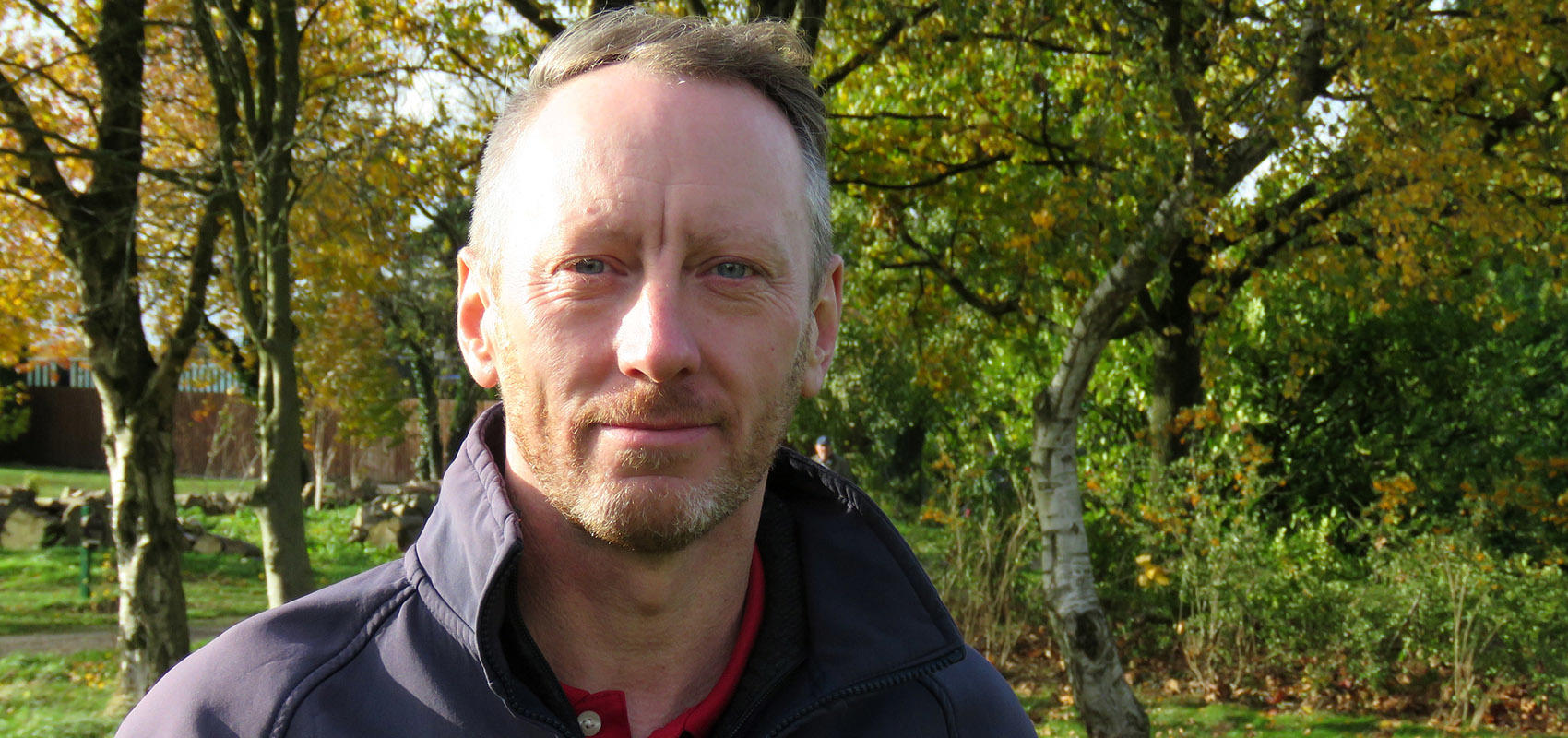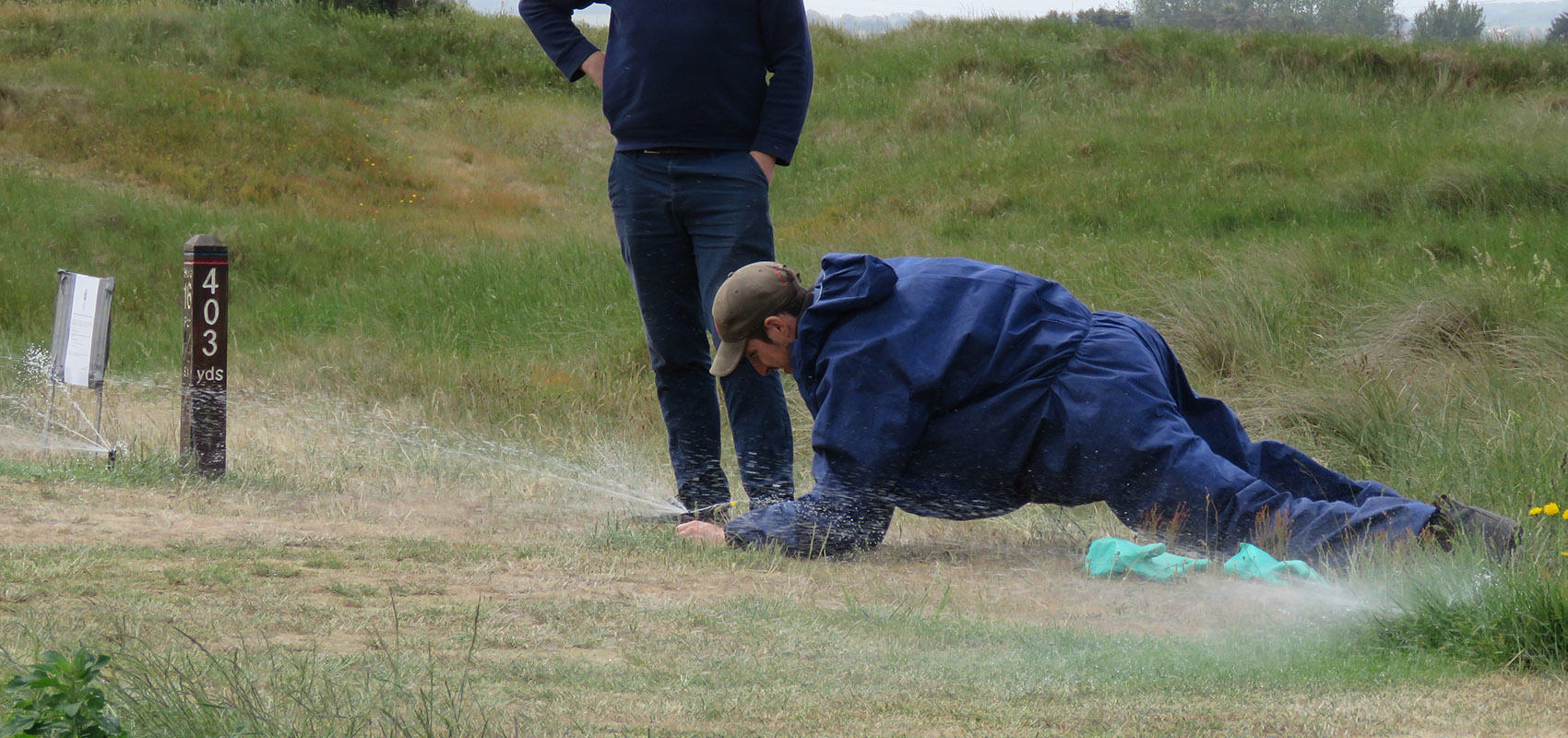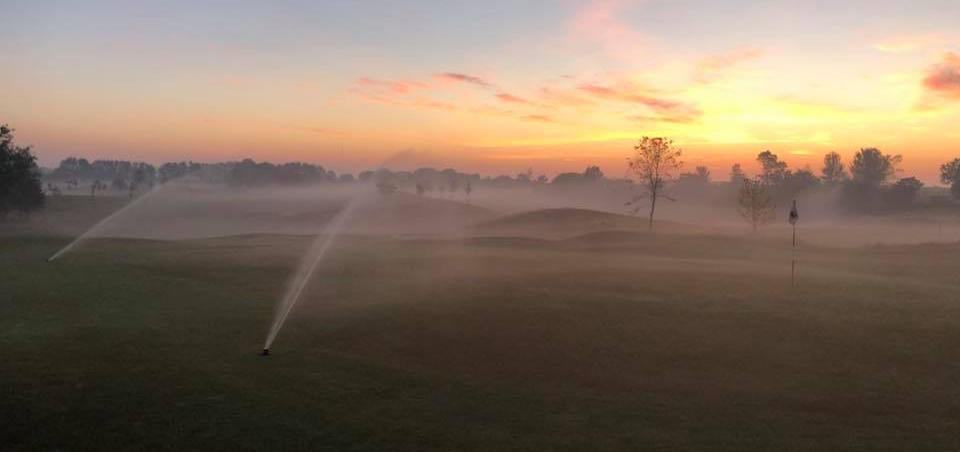- Homepage
- News and Features
- The secrets of golf course irrigation revealed
The secrets of golf course irrigation revealed

Scott Reeves is course manaager at Leyland Golf Club
Its workings are a mystery to most golfers but, underneath the soil, our courses wouldn’t survive without an effective irrigation system.
Ask around the clubhouse about what makes an irrigation system tick and there’s a chance a couple of us might be able to string together a few words about sprinkler heads.
That would probably account for the sum total of our knowledge. What goes on underneath the ground, in that network of pipes, valves and switches, is something of a riddle.
Without an irrigation system, though, our greens, approaches and tees would look very different.
So, what are the secrets? How does a system work and what effect does it really have on our golf courses?
We asked Scott Reeves, BIGGA chairman and course manager at Leyland, in Lancashire, to put us in the picture.
What is an irrigation system?
It’s basically a tool for delivering water to turf to keep it alive. That’s it in a nutshell.
You take water from a source, whether that’s a lake, mains water or a borehole, and transport it in a controlled fashion to your desired area – whether that’s a green, tee, approach or fairway.
The more sophisticated the system, the more you can control exactly how and when that water is delivered.

How does it do that?
You have a pump that pulls the water from its source and pushes it along a system of pipework. You have a control cable, via a computer, that switches taps and valves on and off and allows water to be dispersed under pressure via a sprinkler.
How does it help and affect a golf course?
Water is one of the critical elements for any living thing. We need air, light, food and water. A grass plant is exactly the same, so an irrigation system basically delivers that water the grass plant needs.
It keeps your turf alive. You can use water in a number of ways to affect the characteristics of the playing surface. But the purists among greenkeepers would say the only use for an irrigation system is really to keep that grass plant alive.
How do greenkeepers use an irrigation system?
It’s about getting the right level of moisture in the soil for healthy turf. Other components for that include drainage and aeration.
You need to understand and control it sufficiently to reach that goal of the ideal soil moisture content.
There are a number of components. The source of water is your first port of call. In our case, it is mains potable water. I’ve worked at courses where there is a borehole or an irrigation lake. Some courses take from streams.
Then you have to have the method of delivery – the pumps and mains pipework that runs around the course. It’s like arterial roads and minor roads. You have the main pipework, which will take the water out to near to a green, and then you’ll have a set of valves and taps to then divert that around the turf surface and the sprinklers to deliver it.
Usually with main pipework, you have cable that at one end is attached to a computer or a controller of some sort and, at the other end, switches that tap on.
Modern irrigation systems, with the software that’s aligned with them, do all sorts of things to optimise the performance of the system. They will calculate the most efficient run pattern. They will look at the hydraulics of the system and consider where the greatest pressure is (is it at that point there, or that point there?). The computer system will work out the most efficient way of optimising that.

How do you know when and where water is required?
If they have the budget, some courses will employ an irrigation engineer. But whether or not you have a dedicated member of staff, there is a complex set of calculations done to work it out.
Most modern systems have variable speed pumps and they will detect where there is a pressure loss. A jockey pump (connected to a sprinkler system and designed to maintain water pressure) then kicks in and runs.
When a green is right next to a pump, it obviously doesn’t need to work quite so hard to power sprinklers compared with those half a mile away.
When do these pumps actually go on?
It’s actually quite easy, in relative terms, to calculate that. You know exactly what your sprinklers can deliver and a rain gauge is the simplest way of deciding this.
You would dot maybe six to 10 of those around a green and switch the sprinklers on for a finite amount of time. You turn them off and measure the amount of water that has been delivered. Say, for argument’s sake, that it delivered however many millilitres of water. You then look at what your moisture loss is. The key factor here is evapotranspiration, known as the ‘ET rate’.
What is that and how does it make a difference?
Water evaporates under sunlight. In turf, water that’s close to the surface and in the soil will, in the right conditions, evaporate. It’s the same as how a puddle evaporates in the sunlight.
Transpiration is the process that takes place within the grass plant to convert water into a gas that can be released through the pores of the plant – the stomata.
That requires energy and so transpiration takes place within the plant and evaporation takes place outside of the plant.
Both result in a loss of available water as a resource for a plant to grow. Water in the soil can be taken up by the plant when it’s pulled in through the roots and water within the plant can be used as a transportation system to move it around.
When the water evaporates, or transpires, there is less of it and less capability for the plant to carry out its normal processes. Evapotranspiration is a combination of the two and that can be measured. You know how much water has been lost through evaporation, because you know how much moisture there is within the soil, and you can physically look at a grass plant and can calculate how much water it probably lost.
The evapotranspiration rate is measured normally in millimetres over time.
Say your ET loss was six millimetres. You know then what you can add and you know how long to switch the sprinklers on for and you know how much water they are going to deliver. The remaining factor is to know what you are aiming for. It will be different from course to course. A links course, for example, will be aiming for a percentage of moisture in the soil that might be very different from what I would want. That’s an agronomic decision and the greenkeeper has to know where his happy space is. For me, it might be 25 per cent volumetric moisture content.
So, if you take a piece of soil – a cubic metre – the amount of moisture in it, air space and roots, should be 25 per cent. That’s where my greens would be happy. At a lot of links courses it will be something like 15 per cent.

That’s an awful lot that’s happening underground…
Delivering healthy turf is a complicated craft. We can make it as scientific as possible and we are getting better at it. It’s not just at the high-end clubs. At ordinary clubs, greenkeepers are very technical about how they measure their application of irrigation.
Feel and experience play a huge part in it.
Why golf courses need irrigation systems
Like all living things, grass relies on water to survive. But natural rainfall is irregular. Despite our best forecasting efforts it can be uncertain when it is going to rain, or how much we are going to get, and so that can’t be relied upon to provide enough water for the plant to flourish on its own.
Irrigation, which can be turned on when it’s not raining or when there isn’t enough rainfall, helps to stop the grass plant wilting and losing rigidity.
Without an irrigation system, it’s all but impossible to ensure that a golf course can remain in playable condition. A USGA report recently said an irrigation system was as integral a part of golf course maintenance as the mowers used to cut tees, fairways and greens.
The Autumn 2019 edition of Your Course is in clubhouses now and features this and a number of other interesting topics about the work of greenkeepers and how they prepare the golf course for your enjoyment. You can also download a digital copy of the magazine from the BIGGA website.
If you enjoy reading Your Course or you’ve got some ideas on topics we should cover or how we can improve the magazine, we’ve got a survey that you can answer that gives you the chance to win a Precision Golf rangefinder.
Author


